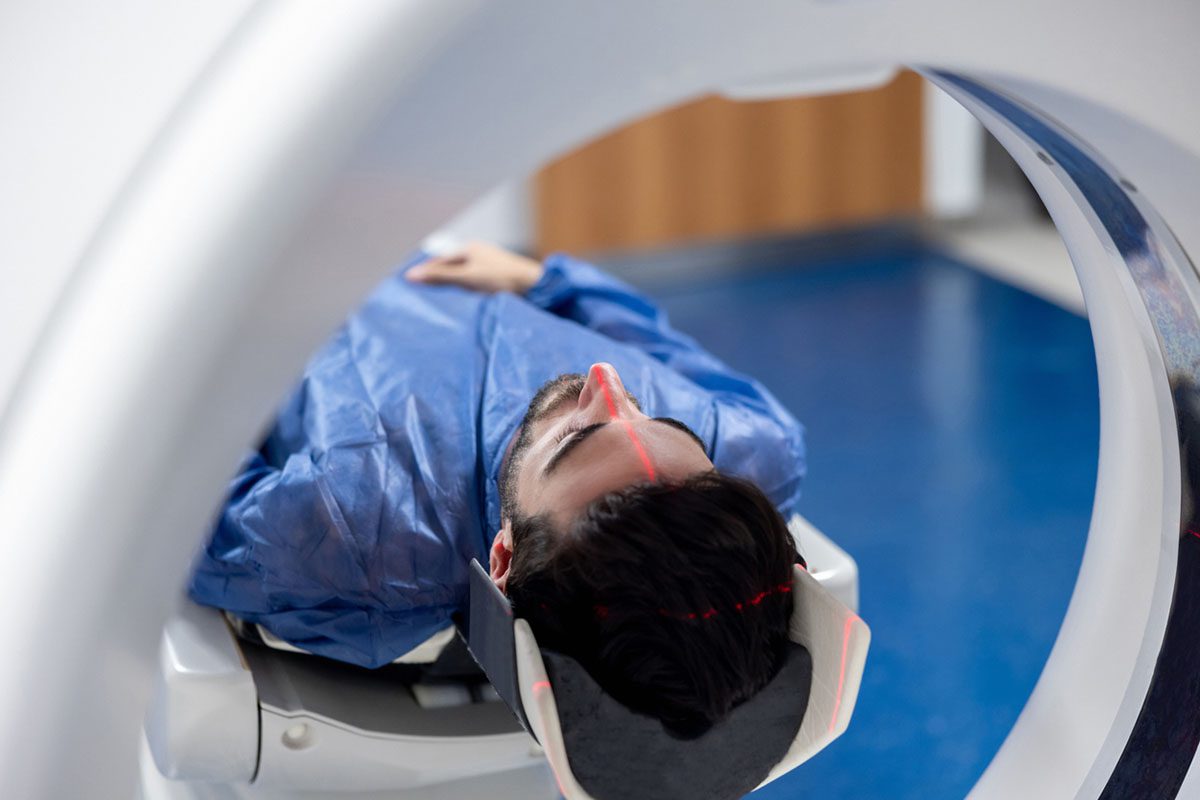
Prim Care Companion CNS Disord 2022;24(3):21cr03100
To cite: Bahji A. Alien hand syndrome in Lewy body dementia. Prim Care Companion CNS Disord. 2022;24(3):21cr03100.
To share: https://doi.org/10.4088/PCC.21cr03100
© Copyright 2022 Physicians Postgraduate Press, Inc.
aDepartment of Psychiatry, University of Calgary, Calgary, Alberta, Canada
bDepartment of Community Health Sciences, University of Calgary, Calgary, Alberta, Canada
cHotchkiss Brain Institute, University of Calgary, Calgary, Alberta, Canada
dBritish Columbia Centre on Substance Use, Vancouver, British Columbia, Canada
*Corresponding author: Anees Bahji, MD, CISAM, FRCPC, Department of Psychiatry, University of Calgary, 2500 University Drive NW, Calgary, Alberta, T2N 1N4, Canada ([email protected]).
Alien hand syndrome (AHS) is a neuropsychiatric phenomenon involving various complex and involuntary goal-directed activities.1,2 Brion and Jedynak3 coined the term in 1972. They referred to a denial of hand ownership and the inability to transfer functions between the hemispheres in patients with corpus callosum tumors.4 Goldstein,5 however, was the first to describe this phenomenon in 1908. Despite these early descriptions, we still know little about the pathophysiology of AHS. Moreover, relative to corticobasal degeneration, the occurrence of AHS among those with Lewy body dementia (LBD) is less clear.1,6–8 This report describes the development of AHS in a patient with an established LBD diagnosis.
Case Report
The patient was a 68-year-old man who lived with his wife. The index hospitalization described here occurred following several incidents of aggression at home. In 2008, he was diagnosed with LBD by a geriatric psychiatrist. Treatment was initiated in 2010 with carbidopa-levodopa for tremor and bradykinesia. While the patient showed some improvements, his psychiatrist discontinued carbidopa-levodopa due to worsening paranoia and visual hallucinations. A few months later, his psychiatrist initiated galantamine (titrated up to 16 mg/d) to improve his cognition. However, there were no significant subjective or objective improvements after 1 year of treatment, and his psychiatrist discontinued galantamine. Unfortunately, previous cognitive measures were not available at the time of his presentation (eg, the Montreal Cognitive Assessment9).
Since 2013, he took low doses of quetiapine (12.5 to 25 mg/d on an as-needed basis for agitation, anxiety, and paranoia), which were moderately helpful in making him feel more at ease. However, over the next 2 years, the patient’s cognition significantly deteriorated, requiring frequent visits to the emergency department for behavioral crises at home.
At hospital admission, his psychotropic medications were quetiapine (12.5 to 25 mg/d) and bupropion (150 mg/d). We did not prescribe additional antipsychotic medications or restart cholinesterase inhibitors due to previous intolerance and lack of efficacy, respectively. Baseline blood work was unremarkable.
His past psychiatric history was significant for childhood-onset attention-deficit/hyperactivity disorder (ADHD), for which he took methylphenidate. However, his treating psychiatrist discontinued psychostimulant-based treatment for ADHD after a recreational overdose in his early 20s. He later experienced a long bout of treatment-resistant nonpsychotic unipolar depression starting in his 50s. In 2009, he received 12 sessions of bifrontal electroconvulsive therapy (ECT) to treat a major depressive episode requiring hospitalization for nearly 6 months; however, his treating psychiatrist discontinued ECT due to worsening anterograde amnesia. Notably, there was no recent history of self-harm or suicidality.
The patient’s past medical history was significant for hypertension, reflux, and dyslipidemia, for which he took ramipril (5 mg/d), pantoprazole (40 mg/d), and atorvastatin (20 mg/d), respectively. A noncontrast computed tomography (CT) scan of the patient’s brain from 2 years before the index admission demonstrated no focal lesions but did show moderate global atrophy. His forensic, addiction, and family history were unremarkable. He previously worked as a mental health nurse and was married to his wife for 50 years.
The patient was appropriately groomed and polite on mental status examination, with a marked bilateral hand tremor and a shuffling gait. His speech was slow and stuttered, with a lack of prosody. His mood was “groggy,” with restricted affect. He endorsed fleeting visual hallucinations of small cats and children but denied auditory hallucinations. His thought form was goal-directed, but he required redirection at times, asking about his wife’s whereabouts during the interview. He denied suicidal and homicidal ideations. He demonstrated partial insight concerning his illness, but he was intermittently disoriented, wandering around into the rooms of other patients. We used 3-word recall (chair, rose, house) to measure immediate and delayed registration (after 5 minutes). While the patient immediately recalled 2 of the 3 words (chair, house), he remembered none of the words after 5 minutes—even with cueing (flower). We also conducted a clock-drawing test, with evidence of micrographia with no indication of neglect; however, the patient reversed the order of instructions when asked to arrange the hands to 5 past 10 and instead put 10 past 5.
Notably, the patient was unaware that, at times, his left hand would seemingly act of its own volition, reaching out for objects placed on the desk to his side. When interviewed, the patient reported that he did not realize his hand was acting as such. This observation was not previously described by collateral history from his family or previous notes, which suggested that it was new.
We requested neurology consultation to reassess his motor symptoms, including the suspected AHS behaviors. The neurology team believed that the movements were consistent with AHS rather than related to Parkinson disease or tardive dyskinesia. They did not recommend restarting levodopa-carbidopa due to concerns of worsening psychosis. Instead, we initiated pramipexole at a low dose (0.125 mg twice/d). The patient showed a modest improvement in non-AHS motor symptoms with no significant worsening of his neuropsychiatric symptoms. He remained on the unit for roughly 1 month before transfer to a chronic care facility, wherein he rapidly deteriorated and ultimately died.
Discussion
This case report describes the occurrence of AHS in a patient with LBD. There are several subtypes of AHS in the existing literature. For example, Panikkath and colleagues2 described the following subtypes: diagnostic dyspraxia, which occurs when one hand performs actions contrary to the other; alien hand sign, which refers to the subjective sense that one’s hand is not one’s own; and anarchic hand, which occurs when the affected side performs goal-directed activity against the volition of the person. Additional components of AHS include supernumerary hand, wherein one feels as though they have an extra limb, as well as levitating hand, self-groping, self-oppositional, and auto-critical hand behaviors, such as self-slapping or self-suffocation.1,6–8
The principal hypotheses regarding the etiology of AHS involve callosal and frontal mechanisms affecting motor pathways of the dominant hand and generalized corticobasal degeneration, which typically affects the nondominant side.10 For example, Caixeta and colleagues10 posited that corpus callosum damage impairs the nondominant hand (eg, intermanual conflict). In contrast, frontal lobe damage affects the dominant hand (eg, grasp reflex). However, as noted by Doody and Jankovic,4 AHS has a broad differential diagnosis, including grasp reflexes (usually secondary to frontal lobe pathology), athetosis, pseudoathetosis, action dystonia, hemiballismus, and hemiataxia.3 In addition, the accelerated rate of cognitive decline, shortened lifespan, increased hospitalization, and earlier and higher prevalence of neuropsychiatric symptoms may predispose individuals with LBD to develop AHS.1,6–8
Although not obtained during the care of this patient, brain imaging findings could have complemented the diagnostic process further. A review11 explored the usefulness of various brain imaging techniques, such as positron emission tomography, single-photon computed tomography, and magnetic resonance imaging, in identifying structural and functional changes in the brains of those with LBD. Mak and colleagues11 concluded that confirmation of dopamine transporter loss is the gold-standard technique, which can reliably distinguish LBD from other dementias, particularly when combined with 18 F-fluorodeoxyglucose markers. Using functional MRI techniques, Assal and colleagues7 identified 3 potential neural correlates of AHS, finding that aberrant movements involved selective activation of the contralateral primary motor cortex, premotor cortex, and left inferior frontal gyrus. 12 Their findings correlated with those of Schaefer and colleagues,13 which further substantiated the claim that aberrant movements occurring in AHS involve a “distributed neural network” encompassing regions responsible for inhibition control and the experience of agency.
Although rapid decline and physical deterioration are not uncommon scenarios in the care of individuals with dementia, cases involving those with LBD in the context of AHS have not been previously described apart from select case reports.1–3,6,7 Hence, AHS continues to be an intriguing neuropsychiatric phenomenon, catching the attention of psychiatrists and neurologists for more than a century. Consideration of broad differential diagnoses and appropriate consultation to neurology may further support the management and care of patients with more complex neuropsychiatric presentations. Although there are no established treatments for AHS, future research may one day unravel the mystery and intrigue of AHS across molecular, clinical, and structural dimensions.
Published online: May 19, 2022.
Relevant financial relationships: None.
Funding/support: None.
Patient consent: Consent was received from the patient’s next of kin on the patient’s behalf posthumously to publish this case report. Information has been de-identified where possible to protect anonymity.
References (13)

- Feinberg TE, Schindler RJ, Flanagan NG, et al. Two alien hand syndromes. Neurology. 1992;42(1):19–24. PubMed CrossRef
- Panikkath R, Panikkath D, Mojumder D, et al. The alien hand syndrome. Proc Bayl Univ Med Cent. 2014;27(3):219–220. PubMed CrossRef
- Brion S, Jedynak CP. Troubles du transfert interhémisphérique (callosal disconnection): a propos de trois observations de tumeurs du corps calleux. Le signe de la main étrangére. [Disorders of interhemispheric transfer (callosal disconnection). Three cases of tumor of the corpus callosum. The strange hand sign.] Rev Neurol (Paris). 1972;126(4):257–266. PubMed
- Doody RS, Jankovic J. The alien hand and related signs. J Neurol Neurosurg Psychiatry. 1992;55(9):806–810. PubMed CrossRef
- Goldstein K. Zur lehre von der motorischen apraxie. Z Psychol Neurol. 1908;11:169–187.
- Aboitiz F, Carrasco X, Schröter C, et al. The alien hand syndrome: classification of forms reported and discussion of a new condition. Neurol Sci. 2003;24(4):252–257. PubMed CrossRef
- Assal F, Schwartz S, Vuilleumier P. Moving with or without will: functional neural correlates of alien hand syndrome. Ann Neurol. 2007;62(3):301–306. PubMed CrossRef
- Park YW, Kim CH, Kim MO, et al. Alien hand syndrome in stroke: case report and neurophysiologic study. Ann Rehabil Med. 2012;36(4):556–560. PubMed CrossRef
- Nasreddine ZS, Phillips NA, Bédirian V, et al. The Montreal Cognitive Assessment, MoCA: a brief screening tool for mild cognitive impairment. J Am Geriatr Soc. 2005;53(4):695–699. PubMed CrossRef
- Caixeta L, Maciel P, Nunes J, et al. Alien hand syndrome in AIDS: neuropsychological features and physiopathological considerations based on a case report. Dement Neuropsychol. 2007;1(4):418–421. PubMed CrossRef
- Mak E, Su L, Williams GB, et al. Neuroimaging characteristics of dementia with Lewy bodies. Alzheimers Res Ther. 2014;6(2):18. PubMed CrossRef
- Brainwave. Are we in power? The functional neuroanatomy of intentional action. Accessed July 14, 2020. http://neuraloscillation.blogspot.com/2014/06/are-we-in-power-functional-neuroanatomy.html
- Schaefer M, Heinze H-J, Galazky I. Alien hand syndrome: neural correlates of movements without conscious will. PLoS One. 2010;5(12):e15010. PubMed CrossRef
Please sign in or purchase this PDF for $40.
Save
Cite



